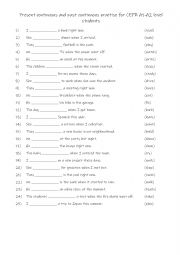
|
Present continuous and past continuous practise
Present continuous and past continuous practise for CEFR A1-A2 level students. Students read the sentences and look for key words to see if the given verb needs to be present or past formation. Answers are on page 2.
Level: elementary
Age: 10-100
Type:
Downloads: 119
|
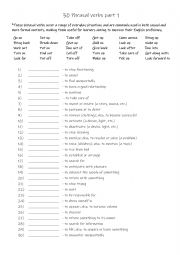
|
30 Phrasal verbs part 1 a
These phrasal verbs cover a range of everyday situations and are commonly used in both casual and more formal contexts, making them useful for learners aiming to improve their English proficiency; they are suitable for CEFR A2-B1 levels. Students match the phrasal verbs to their definitions. Answers on page 2. All of the phrasal verbs used in this ...
Level: elementary
Age: 10-100
Type:
Downloads: 119
|
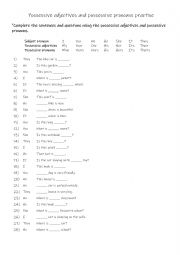
|
Possessive adjectives and possessive pronouns practise
Students complete the sentences and questions using the possessive adjectives and possessive pronouns. This worksheet is suitable for low A1-A2 students.Answers on page 2.
Level: elementary
Age: 10-100
Type: worksheet
Downloads: 119
|
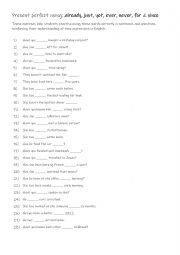
|
A1-A2 Present perfect using already, just, yet, ever, never, for & since
Students read the sentences / questions and complete them using one of the given words.These exercises help students practise using these words correctly in sentences and questions, reinforcing their understanding of time expressions in English. Answers on page 2.
Level: elementary
Age: 9-100
Type:
Downloads: 119
|
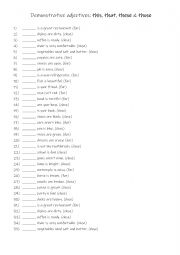
|
Demonstrative adjectives: this, that, these & those practise
Students read the sentence, then complete the gap-fill with the correct demonstrative using the given clues at the end of each sentence (near) or (far). Answers on page 2
Level: elementary
Age: 8-100
Type:
Downloads: 119
|
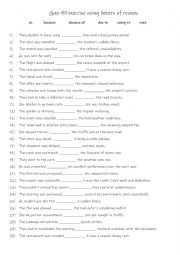
|
A2-B1 Gap-fill exercise using linkers of reason
These linkers help to clearly express the relationship between ideas in a sentence. They indicate cause and effect, reasons, or conditions, which makes your writing and speech more coherent and easier to understand.Mastering different linkers allows you to vary your language and avoid repetition. This can make your writing or speech more engaging a...
Level: elementary
Age: 10-100
Type:
Downloads: 119
|
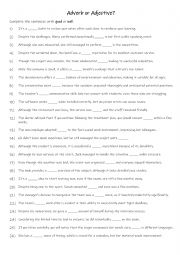
|
B1 adjective or adverb practise using: good or well
Students read the sentences to see if an adjective or an adverb is needed to complete the sentence. 13 sentences require an adjective and 13 sentences require and adverb to complete the sentences. Answers on page 2.
Level: intermediate
Age: 10-100
Type: worksheet
Downloads: 119
|
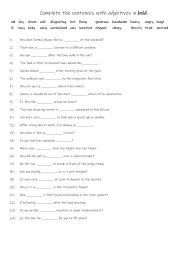
|
A2-B1 24 adjectives to describe:feelings and personal traits
Students familiarise themselves with 24 adjectives and their meanings.Then they read the sentences to see which adjective is suitable to complete the gap-fill. Answers on page 2.
Level: intermediate
Age: 8-100
Type:
Downloads: 119
|
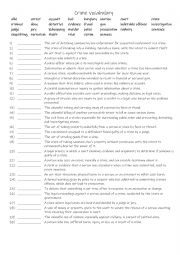
|
A2+- B1 Crime vocabulary - 30 words
Students familiarise themselves with the 30 crime related words and their meanings.Then they read the definitions and write the word being described in the space provided. Answers on page 2.
Level: intermediate
Age: 9-100
Type:
Downloads: 119
|
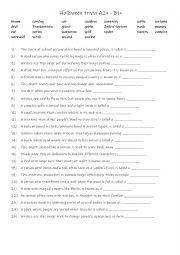
|
A2+-B1+ Halloween trivia 25 words
Students familiarise themselves with the 25 Halloween related words and their meanings. Then they read the definitions and write the word being described in the space provided. Answers on page 2.
Level: intermediate
Age: 9-100
Type:
Downloads: 119
|












